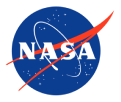
Uranus
The first planet discovered with the aid of a telescope.
TODAY
Moons
Mission
All About Uranus
Planet Uranus Overview
Uranus is very cold and windy. It is surrounded by faint rings and more than two dozen small moons as it rotates at a nearly 90-degree angle from the plane of its orbit. This unique tilt makes Uranus appear to spin on its side.
Uranus is blue-green in color due to large amounts of methane, which absorbs red light but allows blues to be reflected back into space. The atmosphere is mostly hydrogen and helium, but also includes large amounts of water, ammonia and methane.
Astronomer William Herschel tried unsuccessfully to name his discovery Georgium Sidus after his patron, English king George III. Instead, the planet was eventually named for Uranus, the Greek god of the sky, who was also the father of Kronos (or Saturn in Roman mythology).
Uranus
Pop Culture
Uranus is the source of more than a few jokes, and witty – and not so witty – puns. But the ice giant also has been a serious destination various fictional stories, and on TV shows such as "Doctor Who." The radioactive element uranium was named after Uranus when it was discovered in 1789, just eight years after the planet was discovered.





























